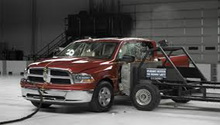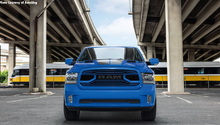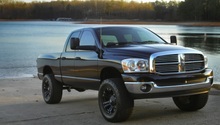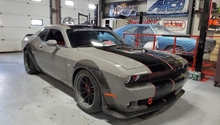Dodge Ram 1994-2001: Crash Test and Safety Ratings
The Dodge Ram is a powerful truck. Read on to learn how it holds up in various crash tests.
This article applies to the Dodge Ram (1999-2001).
While years of towing heavy loads across long distances as well as general wear and tear and aging might threaten to keep an inferior truck curbside after racking up tens of thousands of miles on the road, the Dodge Ram is manufactured to maintain a high level of performance that holds up no matter what! However, this high performing vehicle is not without some areas for improvement. Similar to other SUVs and trucks on the market today, the Dodge Ram does not receive high ratings across all crash test scenarios. While this information should not scare you, it should make you a more informed consumer, as well as equip you with the safety information you'll need to make a well-thought-out decision about the purchase of your next used truck.
Crash Worthiness
According to the Insurance Institute for Highway Safety (IIHS), the Dodge Ram receives a "poor" rating for "frontal overlap." This includes model years 1998 to 2001. In 2002, the rating jumped to "good" and has remained so ever since. The Dodge Ram fared more favorably when tested by the National Highway Traffic Safety Administration (NHTSA), which awarded the truck a 5-star frontal crash test. The overall rating was downgraded to 3 stars, as the side pole test only managed to bring in a single star.

Front Crash Offset Test: Comparison to Other Large Trucks
When compared to other large trucks, the Dodge Ram does not lead the competition in safety; however, it does not trail too far behind either (that award goes to the Ford F-150).
Here's why the Dodge Ram was rated "poor" overall by the IIHS:
- During the offset crash test, the crash dummies experienced injury from collapsing and moving parts within the passenger compartment.
- The safety design did not prevent the crash test dummies from moving about the passenger compartment in a way that caused injuries.
- Air bags deployed late, causing the crash test dummies to sustain head and neck injuries that could have been prevented.
The Dodge Ram received a "poor" score for head/neck, restraints, and leg/foot (left). However, the truck received a "good" score for chest, an "acceptable" score for leg/foot (right), and a "marginal" score for structure/safety cage.
The Toyota Tundra, on the other hand, received the highest ratings for strong structural performance within the passenger compartment, resulting in less intrusion and moving. Finally, the Ford F-150 performed the worst of all large trucks tests due to major collapses of the passenger compartment and a range of other safety concerns.
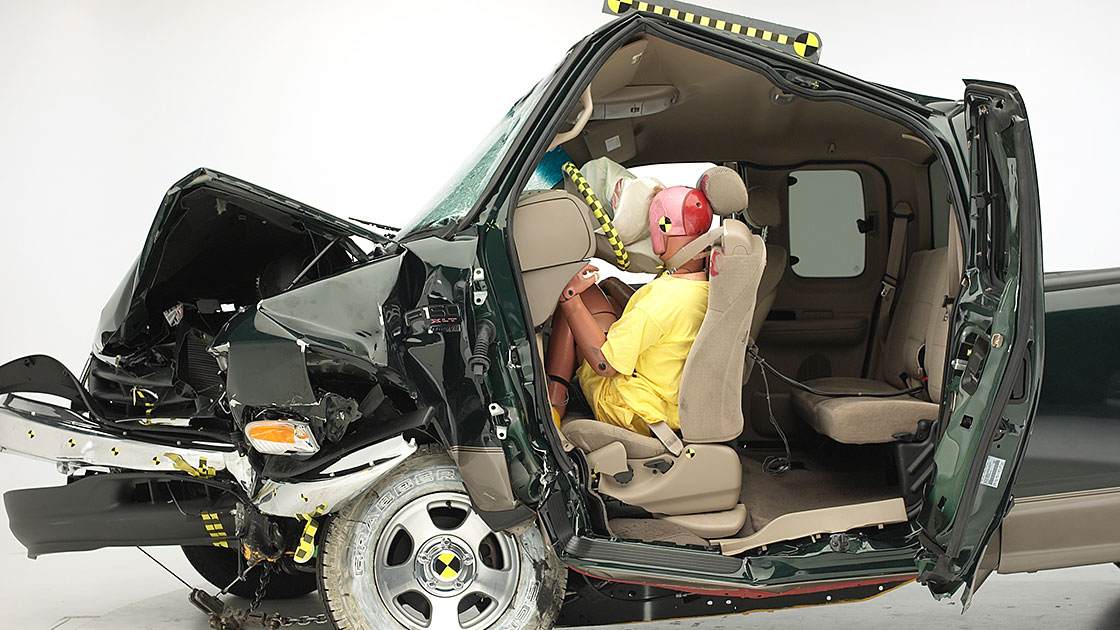
Safety Features
In addition to standard safety features such as safety belts and head restraints, the Dodge Ram is also equipped with anti-lock brakes as well as head and side-mounted air bags.

Common Questions
Does rear crash protection matter?
Rear crash protection could prevent you from spending years suffering from chronic back and neck pain from injuries suffered during a collision in which you were not properly protected.
Are head restraints really necessary?
Yes! A head restraint is designed to ensure your head is protected during a rear-end collision, which is one of the most common types of collisions occurring on the road today. However, for the head restraint to work properly and protect you from whiplash, it must be designed to move in tandem with the rest of your seat. This will ensure your head and torso are not jolted in opposite directions during a collision.
Does technologically advanced safety equipment guarantee better safety results?
No. However, crash tests are performed on all vehicles before entering the market to ensure you know which vehicles are safe and which manufacturers simply employ a great public relations team to make you think they are.
Common Issues
Insufficient Head Restraint
To aid the effectiveness of a head restraint during a collision, always wear a seat belt while on the road.
Faulty or Slow-working Air Bags
Have your air bags checked regularly by a certified mechanic. Your air bags are covered under your factory warranty. Speak to your local Dodge dealer if you have questions or concerns about the effectiveness of your air bags.
Related Discussion and Sites
- Crash Test Forum - Dodgeforum.com
- Front Overlap Crash-Test Results - IIHS.org
- Large Trucks - IIHS.org


